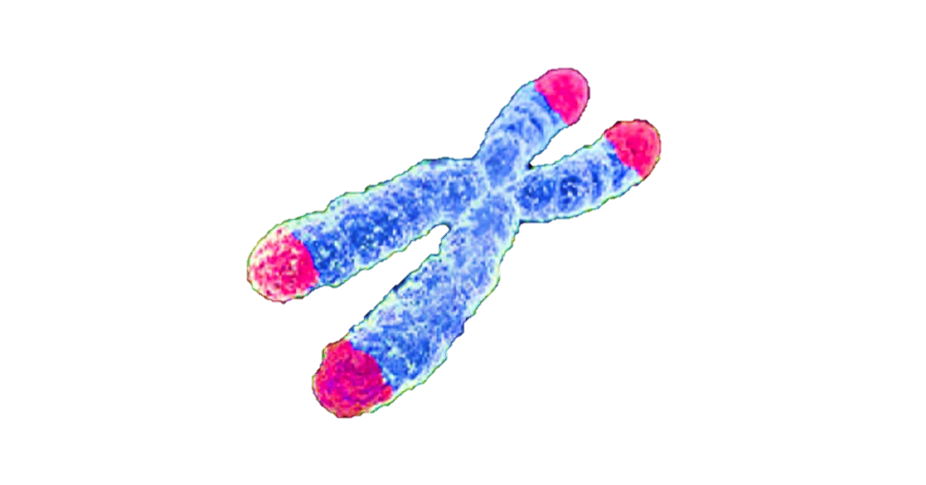
Answer
428.7k+ views
Hint:-A telomere is derived from two Greek words ‘telos’ which means an end, and ‘meros’ which means part. So, telomere can be defined as the terminal portion of the chromosome that is known for the protection of the ends of the chromosomes from deterioration or fusion with other neighboring chromosomes.
Complete step-by-step solution:-
Telomeres are non-sticky ends that are composed of repetitive nucleotide sequences that are located at the end of each chromosome. In eukaryotic chromosomes, these repetitive sequences are followed by 3’ guanine rich overhangs. These G-rich overhangs form G-quadruplexes which are known for providing protection, suppression of recombination, and inhibition of telomere extension.

Thus, the telomeres of eukaryotic chromosomes consist of short sequences of guanine-rich repeats but not cytosine, adenine, or thymine rich repeats. Therefore, options (A), (B), and (D) are incorrect.
Hence, the correct option is (C).
Additional information:-
The scientists, Elizabeth Blackburn and Jack Szostak were the ones who discovered that a unique DNA sequence in the telomeres is known for the protection of chromosomes from degradation. In the vertebrates, the repetitive sequence present in the telomeric region of each chromosome is 5’-TTAGGG-3’, which is repeated about 2500 times in the case of humans. These regions are present at the end of linear chromosomes. Most of the prokaryotes have circular chromosomes, hence, telomeres are absent in them. Telomeres are also known to make sure that the DNA is being copied properly during cell division or not. The replication of DNA does not take place at the telomeric ends, thereby, leading to the formation of shorter DNA strands. Telomeres are responsible for the aging process as each time the cell divides, the telomere gets shorter enabling them to do their job properly, thereby causing the cells to age and stop functioning properly.
Note:- Telomeres are known to protect the ends of chromosomes which is possible only because of the presence of G-quadruplexes formed from guanine-rich repeats present at the 3’ ends of the DNA strand.
Complete step-by-step solution:-
Telomeres are non-sticky ends that are composed of repetitive nucleotide sequences that are located at the end of each chromosome. In eukaryotic chromosomes, these repetitive sequences are followed by 3’ guanine rich overhangs. These G-rich overhangs form G-quadruplexes which are known for providing protection, suppression of recombination, and inhibition of telomere extension.

Thus, the telomeres of eukaryotic chromosomes consist of short sequences of guanine-rich repeats but not cytosine, adenine, or thymine rich repeats. Therefore, options (A), (B), and (D) are incorrect.
Hence, the correct option is (C).
Additional information:-
The scientists, Elizabeth Blackburn and Jack Szostak were the ones who discovered that a unique DNA sequence in the telomeres is known for the protection of chromosomes from degradation. In the vertebrates, the repetitive sequence present in the telomeric region of each chromosome is 5’-TTAGGG-3’, which is repeated about 2500 times in the case of humans. These regions are present at the end of linear chromosomes. Most of the prokaryotes have circular chromosomes, hence, telomeres are absent in them. Telomeres are also known to make sure that the DNA is being copied properly during cell division or not. The replication of DNA does not take place at the telomeric ends, thereby, leading to the formation of shorter DNA strands. Telomeres are responsible for the aging process as each time the cell divides, the telomere gets shorter enabling them to do their job properly, thereby causing the cells to age and stop functioning properly.
Note:- Telomeres are known to protect the ends of chromosomes which is possible only because of the presence of G-quadruplexes formed from guanine-rich repeats present at the 3’ ends of the DNA strand.
Recently Updated Pages
How many sigma and pi bonds are present in HCequiv class 11 chemistry CBSE

Mark and label the given geoinformation on the outline class 11 social science CBSE

When people say No pun intended what does that mea class 8 english CBSE

Name the states which share their boundary with Indias class 9 social science CBSE

Give an account of the Northern Plains of India class 9 social science CBSE

Change the following sentences into negative and interrogative class 10 english CBSE

Trending doubts
Fill the blanks with the suitable prepositions 1 The class 9 english CBSE

Difference between Prokaryotic cell and Eukaryotic class 11 biology CBSE

Differentiate between homogeneous and heterogeneous class 12 chemistry CBSE

Difference Between Plant Cell and Animal Cell

Give 10 examples for herbs , shrubs , climbers , creepers

Write a letter to the principal requesting him to grant class 10 english CBSE

One cusec is equal to how many liters class 8 maths CBSE

Distinguish between Khadar and Bhangar class 9 social science CBSE

Change the following sentences into negative and interrogative class 10 english CBSE



